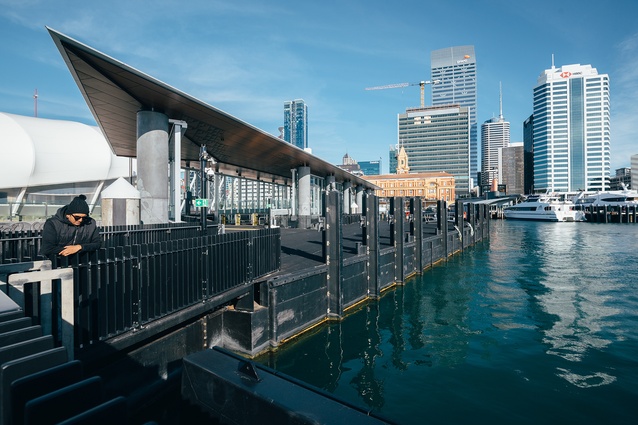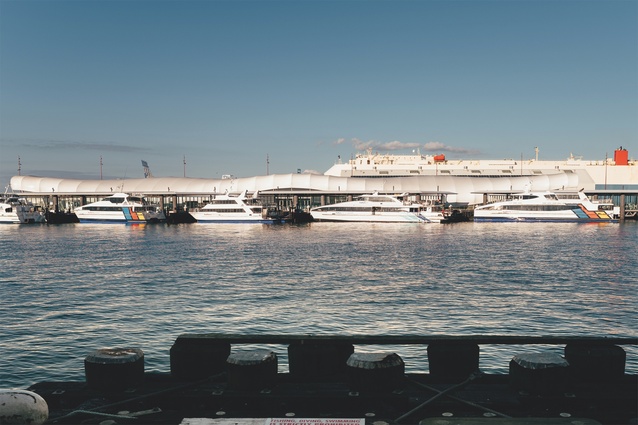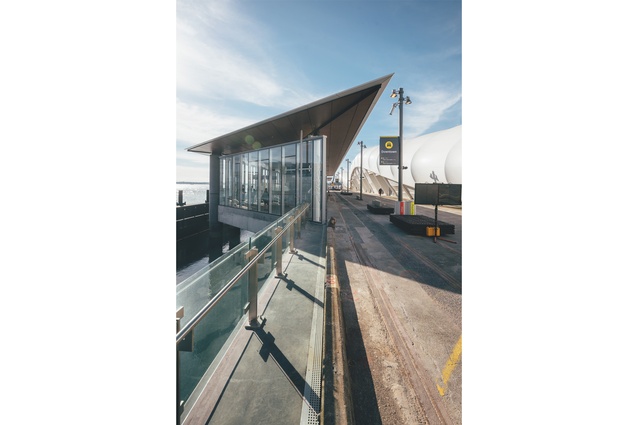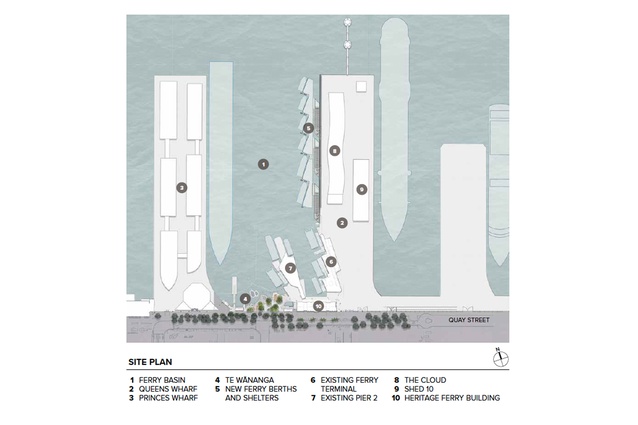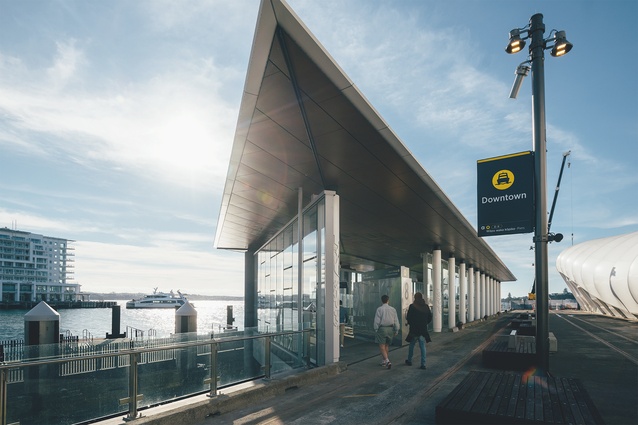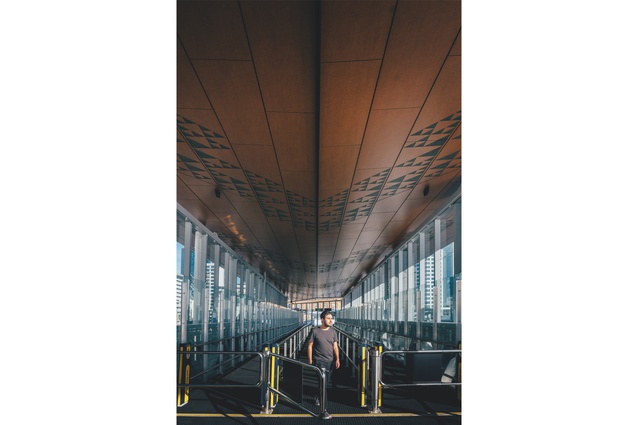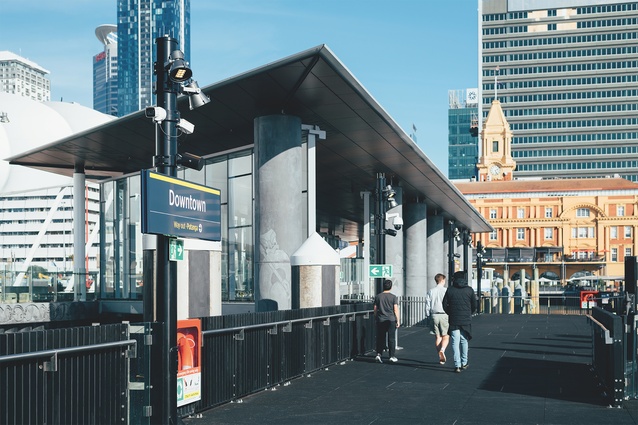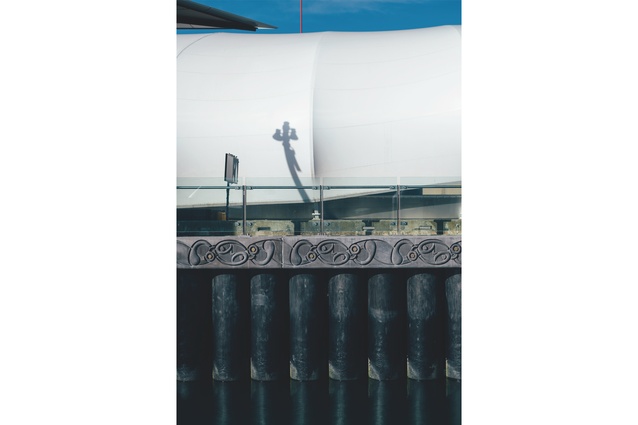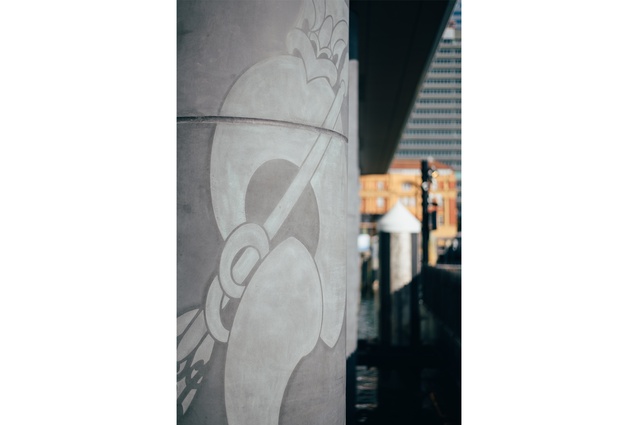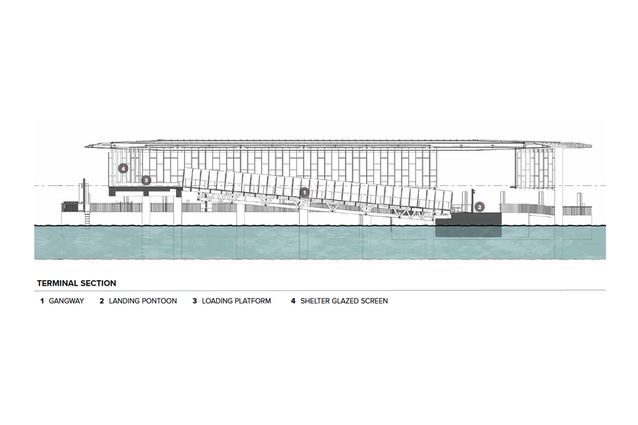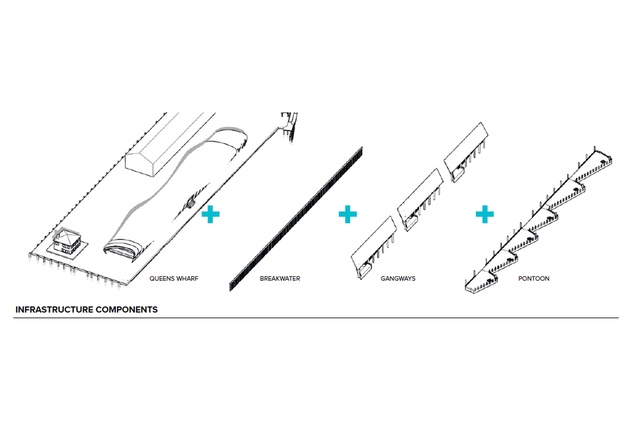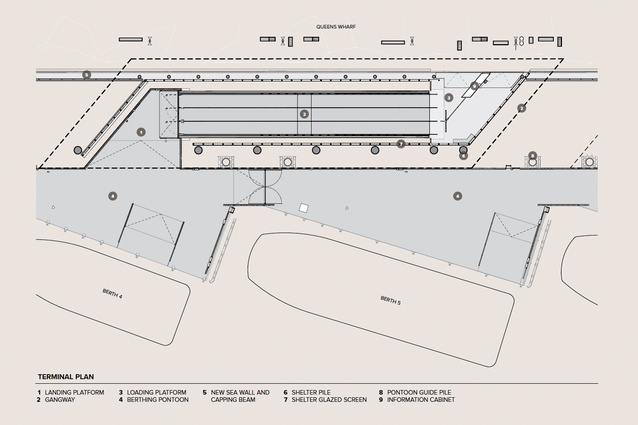Ebb and flow
Chris Barton finds Te Ngau o Horotiu, Auckland Council and Auckland Transport’s new Downtown Ferry Terminal designed by Isthmus, speaks to the moon.
Perhaps the most surprising spatial aspect of the gangways of Te Ngau o Horotiu is that when Te Waitematā’s king tides are at their highest, ferry passengers find themselves standing above the top of Queens Wharf. For some, disembarking the gentle slope downhill to the wharf might be a lovely way to attune to the phases of the moon – its gravitational pull, when it’s new or full and orbiting closest to Earth, lifting the harbour waters to their peak. The moon is perhaps even more present at the very lowest tide, when disembarking passengers find themselves toiling up an unusually steep 1:10 gradient instead of its more normal 1:14 at low tides.
As a regular ferry commuter, the very high spring tides always make me feel uneasy – a constant reminder of the climate crisis we blithely inhabit. I look at the about-half-a-metre clearance between the top of the wharf and the sea and think about sea-level rise and storm surges and imagine what the wharf, indeed, much of the reclaimed land of downtown Auckland, will look like when that happens. I think about Venice’s acqua alta, the ages-old phenomenon when the Adriatic Sea tide rises at least 90cm and the city is temporarily flooded at various times each
year. When it happens, sirens sound, raised walkways are put out and people wear gumboots. Then climate change began making the acqua alta more frequent and more severe.
In 2019, a tide rose to 187cm above sea level, submerging more than 80 per cent of the city. Ground-floor spaces were devastated and ancient monuments irreparably damaged. Since then, Mose, an US$8-billion floodgate system, has been deployed to stop the surge and protect the city. It’s true Auckland has spent up large to strengthen its Quay Street sea wall but it’s done nothing to increase its height to deal with an inevitable sea-level rise.
When I share my concerns with Isthmus principal Andrew Mirams, he says: “We have allowed for 50 years of sea-level rise so we added about another half a metre for sea-level rise on top of the height for tides and storms.” Which sounds fairly standard for council guidelines around New Zealand that use scenarios based on one-in-100-year storm surges, combined with a one-metre rise in sea level forecast by 2100. But it also seems somewhat short-sighted, as does the new infrastructure design life of 25 years for the pontoons and 50 years for the steel-encased concrete piles. Never mind. As Mirams points out, all the components of the design, the pontoons and the gangways, are prefabricated and can be moved, perhaps modified, if things go horribly wrong in the next 50 years. One can only hope.
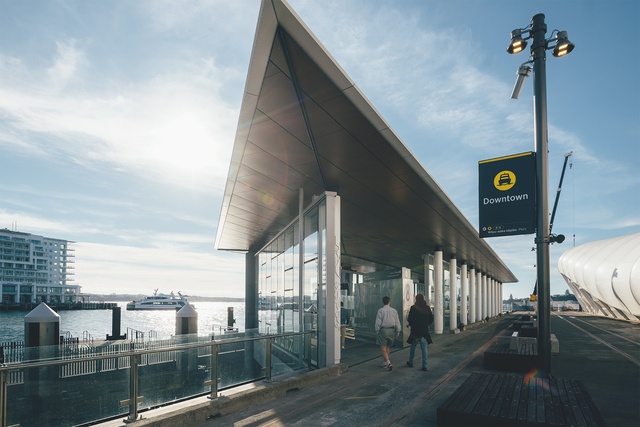
The terminal design is elegantly functional. A new piled breakwater runs along the length of Queens Wharf to provide more sheltered waters for six new pontoon ferry berths. Over a 300m length, these are arranged in a ‘reverse sawtooth’ layout at 17–20 degrees to the wharf, enabling ferries to circulate anticlockwise around the ferry basin and enter the berths bow first, then reverse astern to depart. Ultimately, with the removal of Pier Two (currently used by the Waiheke ferries), all ferry services will berth using this anticlockwise movement to this western edge of the wharf and to a couple of extra new berths in front of the Ferry Building. Te Ngau o Horotiu, the name gifted by mana whenua, refers to the sawtooth shape of the new pontoons being like the teeth of the taniwha.
Three hinged, covered gangways, 33m long and 6m wide, run parallel to the wharf and connect to 16m by 8m pontoons, rising and falling with the tide to provide passenger access. With three lanes providing two waiting queues and one egress queue per gangway, each can accommodate between 230 and 330 queued passengers. While highly efficient, with each gangway operating as a separate terminal with its own Hop card tag-on/tag-off facility, waiting while standing, often on an incline, isn’t the most comfortable experience. Then again, commuter comfort, or the idea of convivial waiting by the sea, doesn’t really feature in this design. There’s also the issue of commuting in Auckland’s rain.

Those catching a ferry at the gangway at the far end of Queens Wharf gain some shelter from the gangway canopies, which extend 2.7m over the pier, but there’s no cover between the three canopies or when moving from the gangways to the uncovered pontoons. Getting wet twice before one even boards the boat seems an unnecessarily puritan way to catch public transport. Always bring an umbrella.
That said, the 4m-tall glass gangway enclosures are beautifully enhanced by mana whenua narratives by artists Maaka Potini, Reuben Kirkwood and Ted Ngataki. These include: the manaia figure Te Wairere cast into the concrete breakwater capping beam; the kaitiaki figures adorning selected piles to welcome and farewell; and the etched pattern on the canopy soffit, which references sails on waka hourua (double-hulled sea waka), which brought Māori here. Narratives that make these light, airy, liminal volumes spectacular; their soaring, craned-in, prefabricated, 65m by 15m canopies creating a dramatic kinetic transition.
Especially when the gangway entrance at the pontoon expands from a 4.4m height at maximum high tide to a cavernous 8m at maximum low tide, reflecting the might of Te Waitematā’s lunar ebb and flow.

